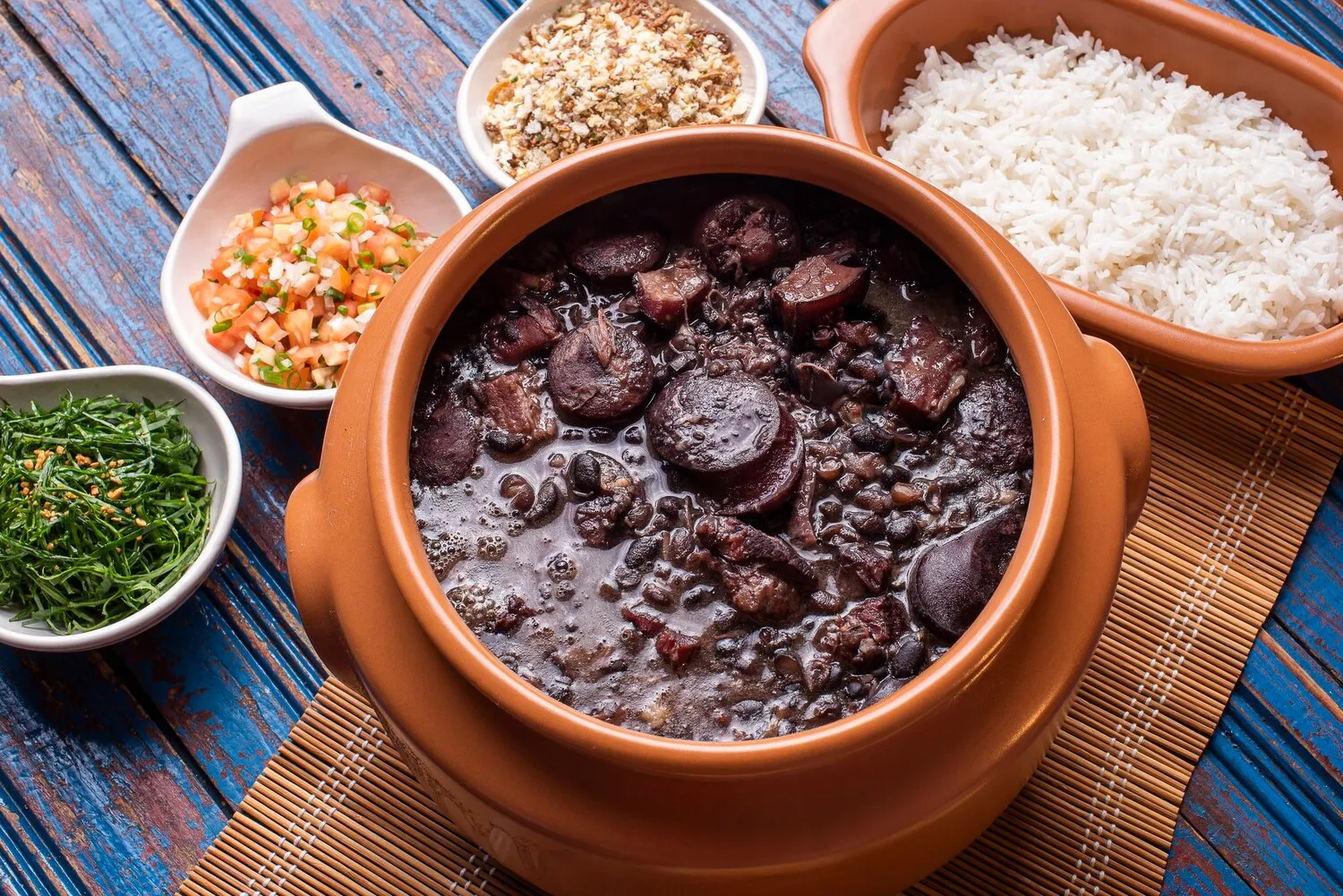
Feijoada
Traditional black bean stew with various smoked pork and beef parts.
Nutrition Facts
* The % Daily Value (DV) tells you how much a nutrient in a serving of food contributes to a daily diet. 2,000 calories a day is used for general nutrition advice.
Quintal Del Carmem
Feijoada's origins are debated, with some believing it evolved from European stews, influenced by Portuguese culinary traditions and the availability of ingredients in Brazil. Others suggest it originated among enslaved Africans who used discarded meat parts to create a hearty and flavorful dish. Regardless of its precise origin, feijoada reflects the historical blending of cultures in Brazil.
Feijoada is more than just a dish; it's a cultural icon in Brazil, representing a sense of community, celebration, and national identity. It's often served on weekends, especially Saturdays, as a leisurely and social meal.
Social Gathering
Feijoada is typically enjoyed with family and friends, fostering a communal dining experience. The preparation and consumption of feijoada often involve hours of conversation, laughter, and shared enjoyment.
National Dish
Considered Brazil's national dish, feijoada is a symbol of Brazilian cuisine and culture, representing the country's history, diversity, and culinary heritage.
Saturday Tradition
In many Brazilian households and restaurants, feijoada is a Saturday tradition, providing a relaxed and festive atmosphere for the weekend.
Feijoada boasts a rich and savory flavor profile, dominated by the smoky and salty notes of various pork and beef cuts, balanced by the earthy flavor of black beans and aromatic spices.
The specific flavors depend on the meats used, which can include dried beef (carne seca), smoked sausage (linguiça), bacon, pork ribs, and other parts like pig's ears or feet. These meats impart smoky, salty, and sometimes slightly funky flavors that are deeply savory. The black beans provide an earthy, creamy base, while ingredients like garlic, onions, bay leaves, and sometimes chili peppers contribute aromatic and spicy nuances.
Soak the Beans
Soaking the black beans overnight (or for at least 4-6 hours) helps to reduce cooking time and improve their texture.
Desalting the Meats
Some cuts of meat, particularly dried beef, are heavily salted. Desalting them by soaking them in water for several hours (changing the water periodically) is essential for balancing the flavors of the dish.
Low and Slow Cooking
Cooking feijoada on low heat for a long period allows the flavors to meld and the meats to become tender. This slow-cooking process is crucial for achieving the authentic feijoada taste.
Serving Suggestions
Feijoada is traditionally served with rice, collard greens (couve), farofa (toasted cassava flour), and orange slices. These accompaniments provide a balance of textures and flavors that complement the richness of the stew.
Explore additional Traditional Brazilian dishes and restaurants
Explore Traditional BrazilianDiscover top dining spots and culinary experiences in Santo André.
Explore Santo AndréLearn more about the food culture, restaurant scene, and culinary heritage of Brazil.
Explore Brazil